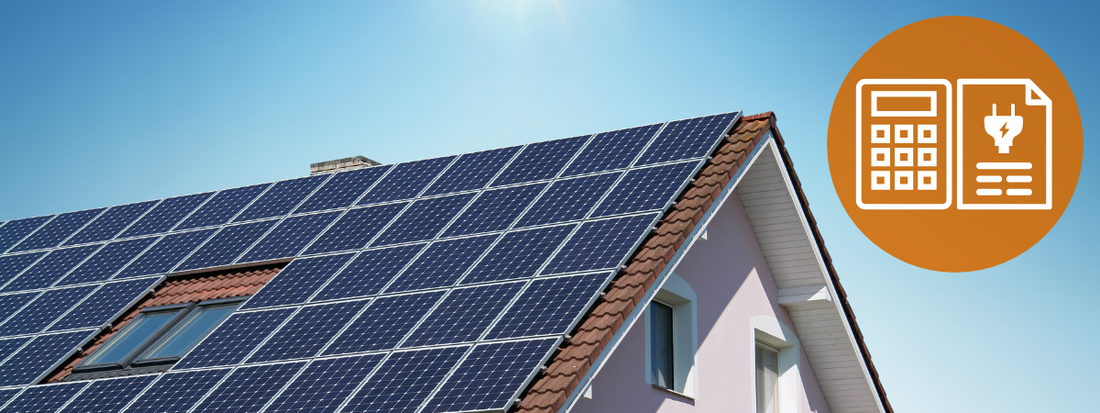
Solar System Sizing & Electrical Interconnection Guide
Share
Here are some valuable system sizing and interconnection tips shared by our engineering team. This compilation covers various aspects, including the sizing of PV panels and inverters, considerations for pairing solar panels with microinverters or optimizers, string sizing with string/central inverters, and the optimal DC/AC ratio for string inverters. Additionally, we provide information on sizing the main panel and adhering to the 120% rule for backfeeding to the grid. Lastly, we offer insights into sizing energy storage systems based on different backup scenarios, along with a convenient battery storage sizing calculator.
Sizing PV Panels and Inverters
A general rule of thumb for pairing inverters and panels is ~1.2 DC/AC wattage ratio. DC is the STC watt rating of the panels, and AC is the max continuous power output. The Solar Design and Quote Tool automatically calculates this on the Inverters step on the "Panel Power / Inverter Power Rating [%]" line below.
Enphase's compatibility tools*:
IQ Microinverter compatibility calculator
Module Compatibility Calculator
*For microinverter branch sizing, refer to the maximum allowed inverters per branch published by the manufacturer on the datasheet.
Sizing Main Panel
You must ensure that subpanels and your main panel adhere to the 120% Rule in order to backfeed (for connecting and sending power) to the grid*. Here's an article that covers this in detail: All You Need To Know About The 120% Rule
Workarounds for when there is not enough amperage allowance in your existing breaker panels to backfeed in your current system include the following options:
downsize or derate the main breaker
upgrade your main electrical panel
*Some utilities are now allowing smartpanels (such as the Lumin Smart Panel) to overcome the backfeed limitation without a main panel upgrade, check with your AHJ if this is an option in your area.
Sizing Energy Storage
Energy storage size can vary widely depending on what is being backed up and the intended use during backup.
TOU (Time of Use) systems can be very small as they only offset less consumption during peak periods to save on energy costs (5-10kW for typical residential applications). TOU systems simply offset consumption from one time of the day to another. Look at your energy consumption on a daily time scale to determine the number of kWh you’d like to store for use at another point in the day when energy is cheaper or when power is not being produced from your array.
A partial backup system means some components depend on the batteries to function during outages (20-40kW for typical residential applications). The components to be backed up will be connected to an “essential loads” panel, which the ESS will maintain power to during an outage or to minimize draw from the grid depending on the specific inverter and modes programmed.
Full home backup means all electrical components will draw from the batteries in a backup or off-grid scenario (40kW+ for typical residential applications). The ESS will back up all electrical loads in the home in the case of an outage or to minimize draw from the grid depending on the specific inverter and modes programmed.
To confirm your energy storage system sizing for backup systems, you'll need to determine a few parameters:
Peak draw (kW)
Design/worst-case draw and daily consumption (kW, kWh)
Design/worst case days of autonomy
#1 You can determine the peak or maximum power draw by identifying the appliances or devices connected to the system and calculating their combined power ratings during peak usage. Be sure to consider surge loads from appliances such as refrigerators and HVAC units which can draw a high wattage for a short duration when starting up.
#2 Account for worst-case design scenarios where all high-power appliances run simultaneously, such as during a heatwave or snowstorm. Add an extra safety margin to the peak power draw to accommodate such scenarios and ensure the system can handle the load. This will be your design power draw.
Choose an inverter: With this information, you can choose an inverter to handle the design power draw. If you’d like to reduce system costs and inverter size, consider reducing the number of components you intend to backup with energy storage.
#3 Next, estimate the number of days of autonomy required, in other words, the duration you want the battery and inverter system to provide backup power without recharging. Consider factors like the frequency of power outages or the time you expect to be off-grid.
Multiply the peak power draw by the number of hours of autonomy to calculate the total energy requirement in kilowatt-hours (kWh) in a worst-case scenario. This value represents the battery system capacity required to sustain the peak load over the desired duration.
Choose a Battery System: With this information, you are ready to select an appropriate battery system that meets your calculated capacity needs. Consider factors like battery compatibility, certifications, chemistry, cycle life, and efficiency. Ensure the chosen battery can safely deliver the required capacity without exceeding its limitations.
Be sure to account for the depth of discharge (DoD) to ensure the battery's longevity, especially when using lead acid batteries, as they are more sensitive to DoD. Determine the recommended DoD for your specific battery technology and adjust the required capacity accordingly. For example, if the recommended DoD is 50%, double the total energy requirement. Lithium Iron Phosphate batteries are recommended as they have a deeper DoD and are safer than other lithium chemistries, which have had cases of thermal runaway.
Be sure to verify compatibility between the inverter and battery system. There are two predominating storage voltages in the residential market today, low voltage (48V) and high voltage (100V+). Each voltage class has separate storage inverters and batteries to choose from.
Additionally, for permit approval in most jurisdictions, inverter and battery manufacturers must get UL 9540A certifications for energy storage systems, and their datasheets will generally indicate which pairings are certified. Sol-Ark hybrid inverters and HomeGrid Stack’d batteries are an example of a low voltage certified system. Growatt MIN inverters and Growatt ARO/APX HV batteries are an example of a high voltage certified system.
To help you decide your energy storage sizing, several manufacturer’s have made estimation tools. Homegrid has a very simplistic Battery Sizing Tool based on monthly consumption to give you a rough idea of the size range to consider. Sol-Ark has a much more granular Inverter and Battery Sizing Tool that looks at each load you are planning to use for energy storage. Fortress Power also has a very detailed Design Calculator.
If you are unsure if you are ready for a full home backup size yet, modular battery systems, such as the HomeGrid Stack’d Batteries can be easily expanded later with additional modules or stacks if you want to gradually build up your system.
We hope these system sizing and interconnection tips have provided you with valuable guidance and insights. Just reach out to our engineering team if you need additional advice. Refer to these helpful guidelines to make informed decisions and optimize your system selections.
